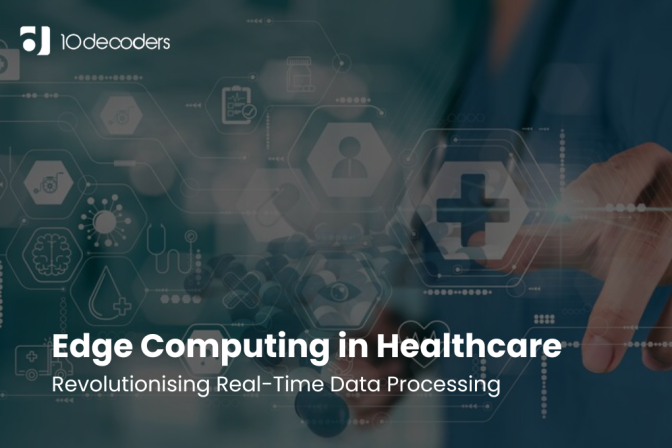Edge Computing in Healthcare: Revolutionising Real-Time Data Processing
The healthcare landscape is undergoing a seismic shift, propelled by the convergence of digital technologies and an ever-growing volume of data. At the forefront of this transformation is edge computing, a technology redefining how healthcare institutions process, analyse, and leverage real-time data, ultimately enhancing patient care and operational efficiency.
Traditional Data Processing Bottlenecks
Historically, healthcare data processing relied on centralised cloud infrastructure. While cloud computing offers significant scalability and storage capabilities, it suffers from inherent limitations in real-time data processing, especially for latency-sensitive applications. The physical distance between data sources (medical devices, wearable sensors) and the cloud creates delays in data transmission and analysis, leading to
- Delayed diagnoses and treatment interventions: Critical decisions in emergency care, surgery, and chronic disease management often require immediate insights from real-time data. Cloud-based processing can introduce unacceptable lag, impacting patient outcomes.
- Reduced resource utilisation: Healthcare systems face strain managing the bandwidth required for continuous data transmission to the cloud. This can lead to bottlenecks, impacting the overall efficiency of data-driven processes.
- Data security concerns: Sending sensitive patient data over public networks raises security concerns, increasing the risk of breaches and unauthorised access.
Edge Computing: Bringing Data Processing Closer to the Source
Edge computing tackles these challenges by decentralising data processing and analysis. It brings computational power and storage closer to the data source, at the network edge, minimising the need for transmission to distant cloud servers. This enables real-time data processing and analysis right where it’s generated, offering several advantages
- Reduced latency: Data is processed and analysed instantaneously, minimising the time between data acquisition and actionable insights. This is crucial for applications like real-time patient monitoring, surgical guidance systems, and personalised medicine approaches.
- Improved resource efficiency: Local processing reduces the burden on network infrastructure, optimising bandwidth utilisation and freeing up cloud resources for other tasks. This leads to more efficient data management and analysis.
- Enhanced data security: By minimising data transmission over public networks, edge computing offers a more secure environment for sensitive patient information. Data can be anonymized or aggregated at the edge before being stored or sent to the cloud, further mitigating security risks.
Real-World Applications of Edge Computing in Healthcare
The potential of edge computing in healthcare is vast, and its applications are rapidly evolving. Here are some key examples
- Remote Patient Monitoring: Wearable sensors and other devices collect real-time vital signs and physiological data. Edge computing analyses this data locally, detecting anomalies and triggering alerts for potential health risks, enabling proactive interventions before complications arise.
- Precision Medicine: Genomic data and real-time patient monitoring can be analysed at the edge to personalise treatment plans based on individual genetic makeup and response to therapy. This leads to more effective and targeted interventions.
- Robotic-Assisted Surgery: Edge computing powers surgical robots and imaging systems, enabling real-time data analysis for precise guidance and decision-making during minimally invasive procedures.
- Smart Hospitals and Clinics: Edge computing can manage and analyse data from connected medical devices, optimising resource allocation, streamlining workflows, and improving operational efficiency within healthcare facilities.
Challenges and Future Prospects
While edge computing holds immense potential, it also presents challenges that need to be addressed
- Security and privacy: Robust cybersecurity measures and data governance frameworks are essential to ensure patient data privacy and security at the edge.
- Interoperability: Standardising data formats and protocols across different devices and edge platforms is crucial for seamless data exchange and interoperability.
- Infrastructure investment: Implementing and maintaining edge computing infrastructure requires investment in hardware, software, and skilled personnel.
Despite these challenges, the future of edge computing in healthcare is brimming with possibilities. As technology evolves and adoption expands, we can expect to see even more innovative applications emerge, revolutionising the way healthcare is delivered, analysed, and optimised.
Conclusion
Edge computing is not just a technological advancement; it represents a paradigm shift in healthcare. By decentralising data processing and enabling real-time insights at the edge, it paves the way for improved patient care, enhanced operational efficiency, and a more data-driven future for healthcare delivery. As we embrace the potential of this technology and work towards overcoming its challenges, we can unlock a new era of personalised medicine, preventative care, and ultimately, better health outcomes for all.



